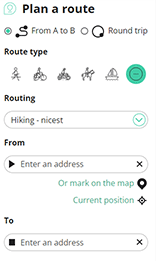Source: Pascal Brackman


Detail of the pillars. Breccia of seashells was a popular building material. Easy to sculpture, but very solid, as you still can see. These rocks date from the Pliocene. In Pliocene times the graben of the Apheios river and the Plains of Elis initially sank faster than they could be filled up with debris from the mountains in the center of the Peloponnesus. This area was under water, and a lot of marine and brakish water sediments were deposited here. Including the shell limestones used as building stones in Olympia as you can see here. You still can recognize the shells in the rock.
![]() | | Public
| | Public

Select one of the most popular activities below or refine your search.
Discover the most beautiful and popular trails in the area, carefully bundled into appropriate selections.
Source: Pascal Brackman
Select one of the most popular categories below or be inspired by our selections.
Discover the most beautiful and popular attractions in the area, carefully bundled in appropriate selections.
Source: Pascal Brackman
With RouteYou, it's easy to create your own customised maps. Simply plot your route, add waypoints or nodes, add places of interest and places to eat and drink, and then easily share it with your family and friends.
Route planner

<iframe src="https://plugin.routeyou.com/poiviewer/free/?language=en&params.poi.id=7226649" width="100%" height="600" frameborder="0" allowfullscreen></iframe>
Try this feature for free with a RouteYou Plus trial subscription.
If you already have such an account, then log in now.
© 2006-2024 RouteYou - www.routeyou.com